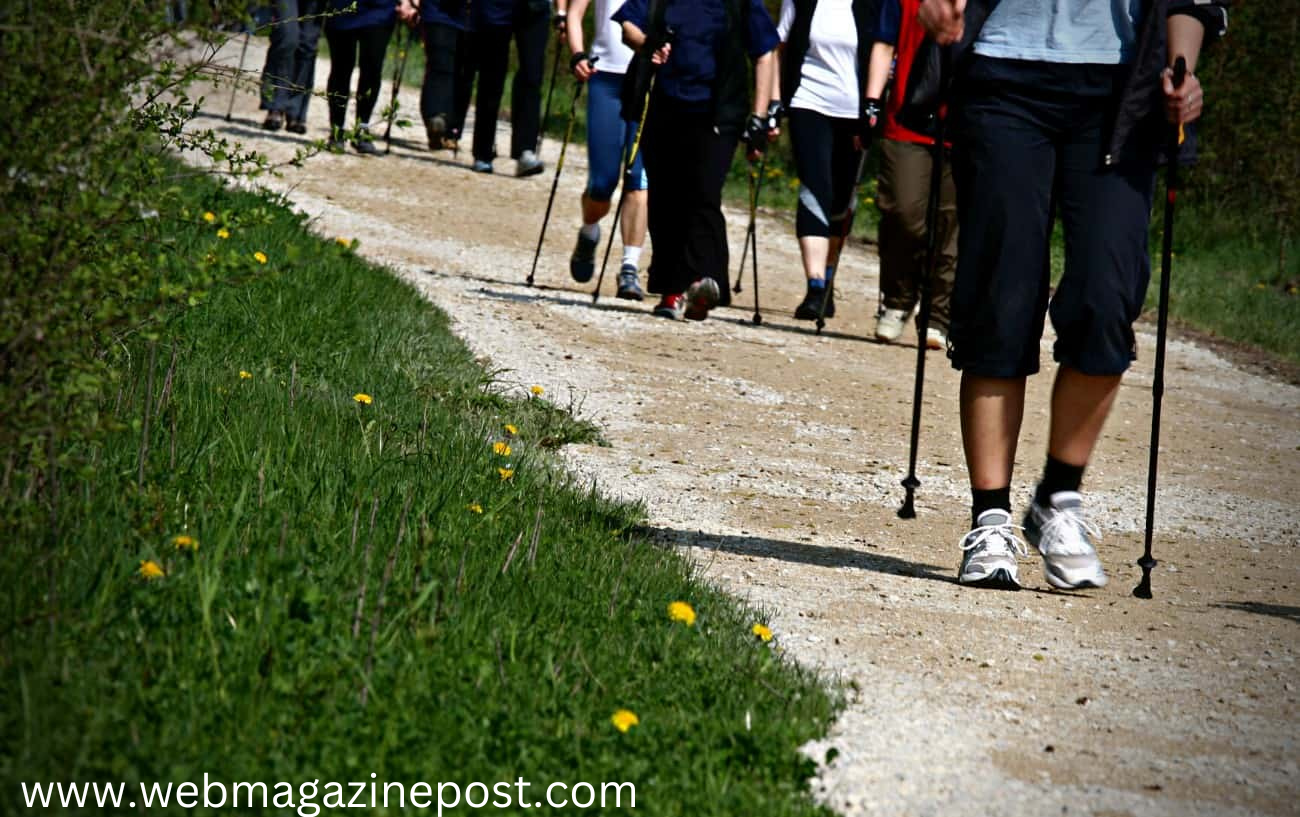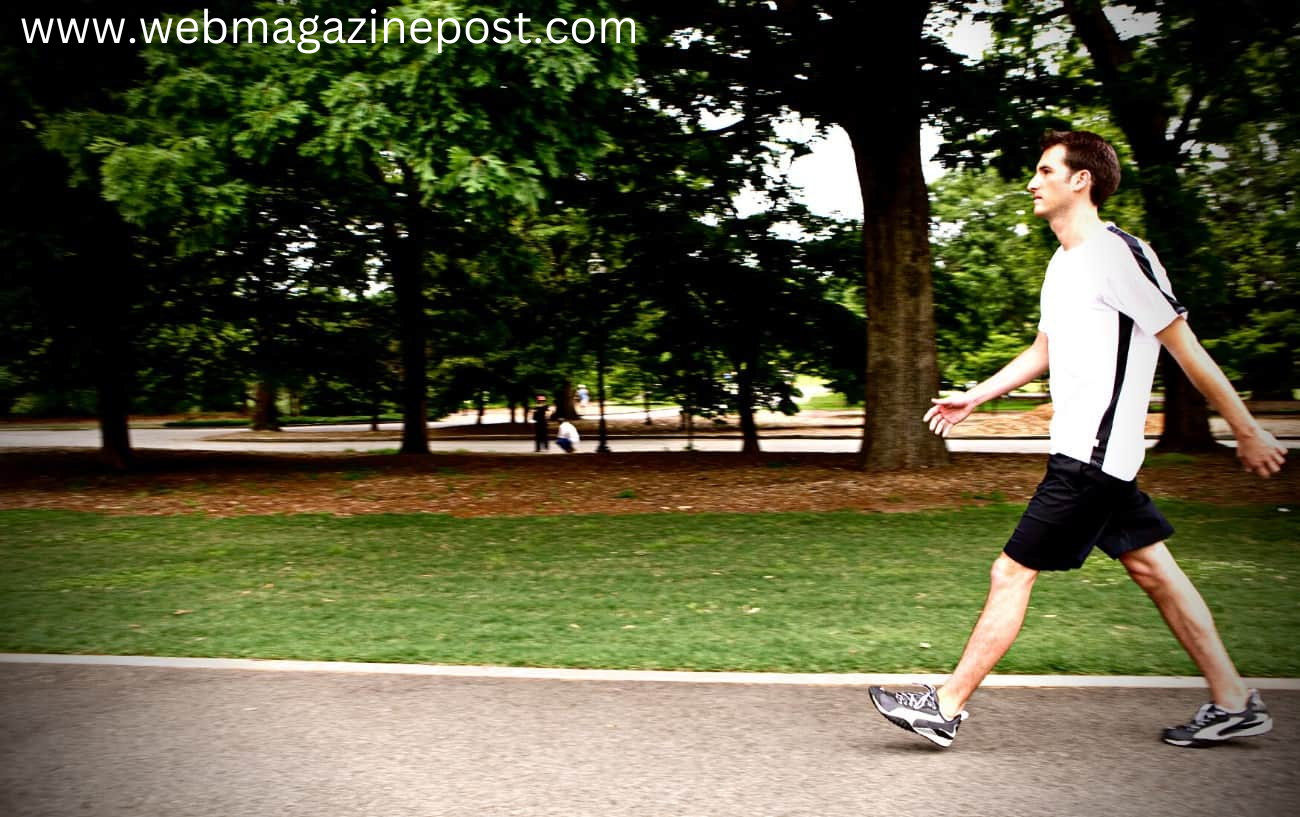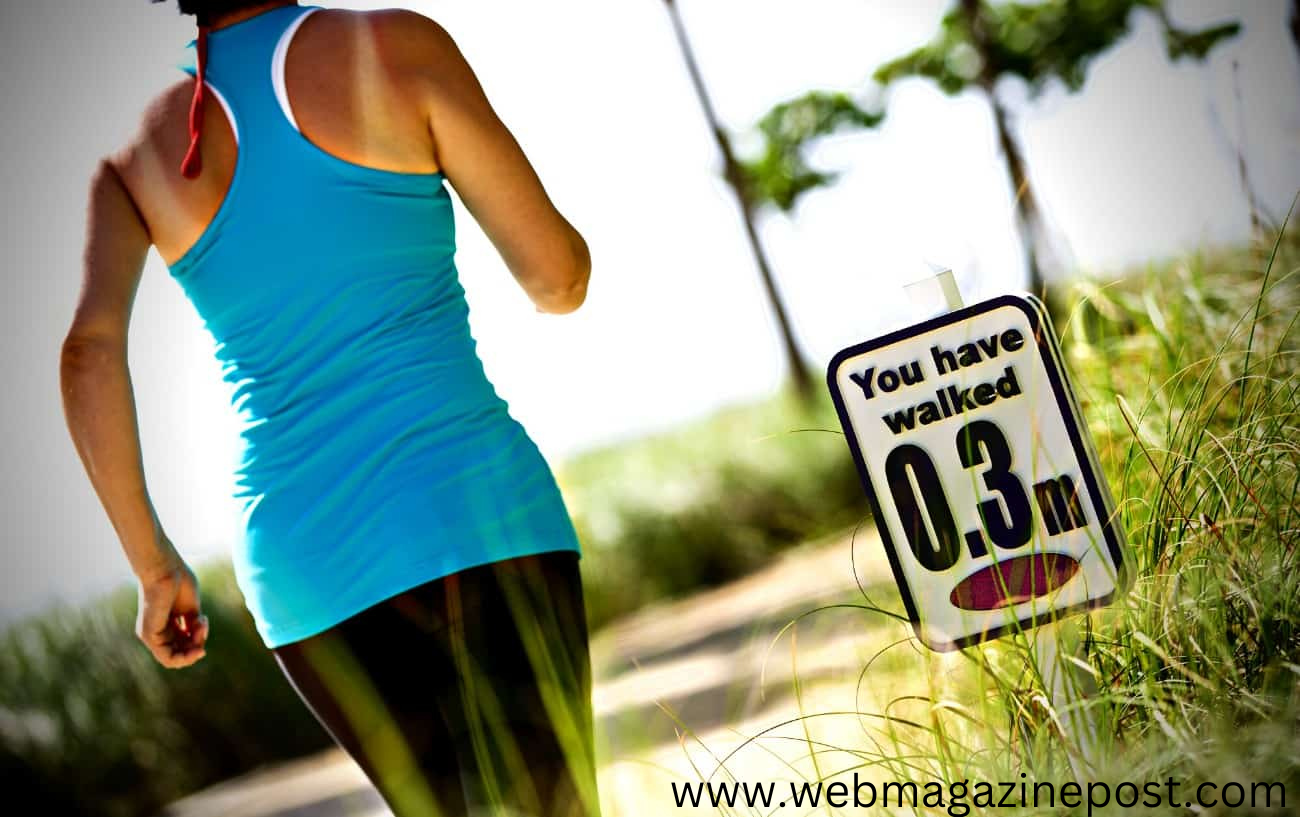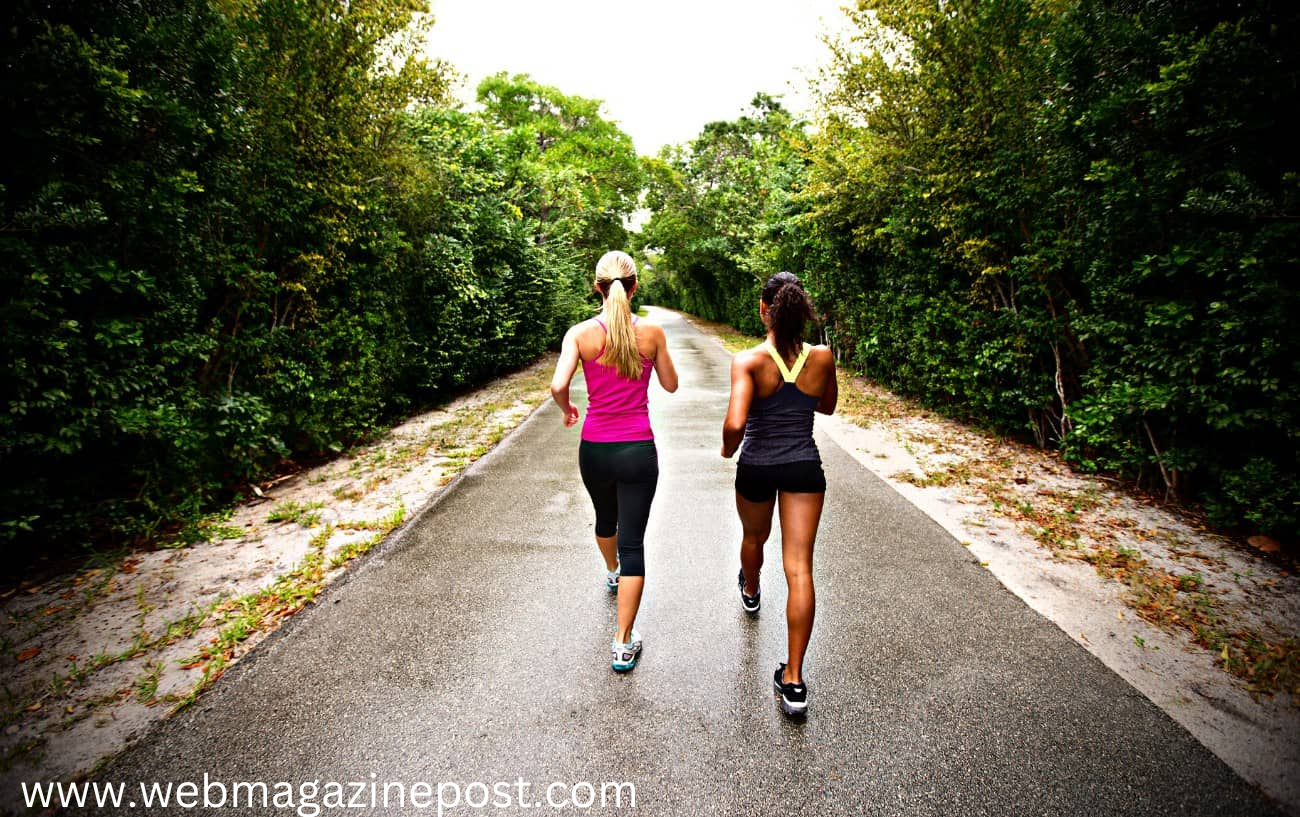
10k Walking Guide: 100% Mental Benefits for a Successful Walk and Strategies to Shed Pounds by Walking
Introduction to 10k Walking Guide
10k Walking Guide might sound daunting at first, but with the right preparation and mindset, it’s an achievable goal for most people. Whether you’re a seasoned walker or just starting out, this guide will provide you with all the information you need to successfully complete a 10k Walking Guide.
What is a 10k Walking Guide?
A 10k Walking Guide is a distance of 10 kilometers or approximately 6.2 miles. It’s a popular distance for charity walks, races, and personal fitness challenges. Unlike running, walking is a low-impact exercise that’s gentle on your joints while still providing a great cardiovascular workout.
Benefits of 10k Walking Guide

10k Walking Guide offers numerous benefits:
- Improved cardiovascular health: Regular walking helps lower blood pressure and improves heart function.
- Weight management: Walking burns calories, which can help with weight loss and maintenance.
- Enhanced mental well-being: Walking can reduce stress and anxiety, improving your overall mood.
- Increased endurance: Training for a 10k builds stamina and physical endurance.
Getting Started
Setting Realistic Goals
Here’s a guide to help you set achievable and meaningful goals:
Define Your Goals Clearly
- Measurable: Ensure you can track your progress.
- Achievable: Set goals that are challenging yet attainable given your current resources and constraints.
- Relevant: Align your goals with your broader objectives and values.
Break Down Goals into Smaller Steps
- Divide larger goals into smaller, manageable tasks.
- Create a step-by-step action plan to stay organized and motivated.
Prioritize Your Goals
- Determine which goals are most important and tackle them first.
Be Realistic About Your Time and Resources
- Assess the time, energy, and resources you have available.
- Adjust your goals based on your current situation and commitments.
Stay Flexible and Adaptable
- Flexibility allows you to stay on track even when unexpected challenges arise.
Monitor Your Progress Regularly
- Use journals, apps, or spreadsheets to keep a record of your achievements.
Learn from Setbacks
- Analyze what went wrong, learn from the experience, and adjust your plan accordingly.
Seek Support and Accountability
- Consider joining a group or finding an accountability partner to stay committed.
Stay Motivated and Persistent
- Remind yourself regularly of why you set your goals.
Choosing the Right Gear
Here’s a comprehensive guide to help you select the best equipment for your needs:
Identify Your Needs
- Determine the specific requirements of your activity (e.g., running, hiking, cycling).
Research and Reviews
- Read reviews from experts and other users to understand the pros and cons of different gear options.
- Check reputable websites, forums, and magazines for detailed information.
Set a Budget
- Establish a budget based on your financial constraints and the importance of the gear.
- Remember that quality gear can be an investment in your safety and performance.
Prioritize Comfort and Fit
- Ensure the gear fits well and is comfortable to use or wear for extended periods.
- For clothing and footwear, consider trying on multiple sizes and styles to find the best fit.
Consider Durability and Quality
- Look for gear made from high-quality, durable materials that can withstand regular use.
- Check for warranties or guarantees that indicate the manufacturer’s confidence in their product.
Assess Functionality and Features
- Evaluate the functionality of the gear and whether it meets your specific needs.
- Consider features such as waterproofing, breathability, weight, and storage capacity.
Test Before Buying
- If possible, test the gear in a store or through a rental service before making a purchase.
- This can help you get a feel for how the gear performs in real-life conditions.
Preparing for Your 10k Walking Guide

Preparing for a 10k Walking Guide requires a combination of physical training, proper nutrition, and strategic planning.
Training Plan to 10k Walking Guide
- Start Early: Begin your training at least 8-12 weeks before the event.
- Build a Schedule: Plan to walk 3-4 times a week, gradually increasing your distance and intensity.
- Mix It Up: Include a mix of longer walks for endurance and shorter, faster walks to build speed.
Gear and Equipment
- Comfortable Shoes: Invest in a good pair of walking shoes that provide support and cushioning.
- Appropriate Clothing: Wear moisture-wicking, breathable fabrics to stay comfortable.
- Accessories: Consider a hat, sunglasses, and sunscreen for sun protection, and a lightweight jacket for cooler weather.
Nutrition and Hydration of 10k Walking Guide
- Balanced Diet: Eat a balanced diet rich in carbohydrates, proteins, and healthy fats to fuel your training.
- Hydrate: Drink plenty of water throughout the day, especially before, during, and after your walks.
- Snacks: Carry light snacks like energy bars or fruit for longer training sessions.
Stretching and Warm-up
- Warm-up: Begin each session with a 5-10 minute warm-up to get your muscles ready.
- Stretching: Perform dynamic stretches before walking and static stretches after to improve flexibility and reduce the risk of injury.
Pacing and Technique to 10k Walking Guide
- Find Your Pace: Start at a comfortable pace and gradually increase your speed as you build endurance.
- Proper Form: Maintain good posture with a straight back, relaxed shoulders, and a natural stride.
Mental Preparation
- Set Goals: Define your personal goals, whether it’s finishing the race or achieving a specific time.
Event Day Preparation
- Arrival: Arrive early to give yourself plenty of time to warm up and get ready.
Post-Walk Recovery
- Cool Down: Take time to cool down with a slow walk and gentle stretches.
- Refuel: Eat a balanced meal and hydrate well after the event.
- Rest: Give your body time to rest and recover, especially if you experience any soreness or fatigue.
Nutrition and Hydration

Proper nutrition and hydration are critical for maintaining energy levels, enhancing performance, and promoting overall health. Here’s a detailed guide on how to manage your nutrition and hydration effectively:
Nutrition
Balanced Diet
- Carbohydrates: Primary source of energy. Include whole grains, fruits, and vegetables.
- Proteins: Essential for muscle repair and growth. Include lean meats, beans, legumes, and dairy products.
- Fats: Necessary for overall health. Emphasize healthy fats found in foods such as avocados, nuts, seeds, and olive oil.
Micronutrients
- Vitamins and Minerals: Essential for various bodily functions. Include a variety of colorful fruits and vegetables to ensure you’re getting a wide range of nutrients.
- Supplements: If needed, consider taking supplements to address any specific deficiencies, but consult a healthcare provider first.
Meal Timing
- Pre-Activity Meals: Eat a light, balanced meal 1-2 hours before exercising. Include complex carbs and some protein.
- Post-Activity Meals: Consume a meal rich in protein and carbs within 30-60 minutes after exercise to aid in recovery. Examples include a turkey sandwich on whole grain bread or a smoothie with protein powder, fruit, and spinach.
Snacking
- Healthy Snacks: Choose snacks that provide sustained energy. Examples include nuts, yogurt, fruit, and whole-grain crackers.
- Practice portion control: Be mindful of serving sizes to prevent overeating.
Hydration
Daily Water Intake
- General Guidelines: Aim for at least 8 glasses (64 ounces) of water a day, but individual needs may vary based on factors like body weight, activity level, and climate.
- Hydration Sources: Besides water, other hydrating options include herbal teas, fruits, and vegetables with high water content (e.g., cucumbers, and watermelon).
Hydration During Exercise
- Before Exercise: Drink about 16-20 ounces of water 2-3 hours before exercising.
- During Exercise: Consume about 7-10 ounces of water every 10-20 minutes during exercise. For intense or prolonged activities, consider sports drinks to replenish electrolytes.
- After Exercise: Rehydrate with 16-24 ounces of water for every pound lost during exercise.
Signs of Dehydration
- Mild Dehydration: Symptoms include thirst, dry mouth, and fatigue.
Special Considerations
Dietary Restrictions and Preferences
- Adapt your nutrition plan to accommodate any dietary restrictions, such as vegetarianism, veganism, gluten intolerance, or allergies.
Hydration in Extreme Conditions
- Hot Climates: Increase water intake to compensate for higher sweat rates.
- Cold Climates: Drink water regularly, as the cold can suppress thirst, leading to unnoticed dehydration.
Practical Tips
Plan Ahead
- Prepare meals and snacks in advance to ensure you have healthy options readily available.
Listen to Your Body
- Pay attention to hunger and thirst cues. Eat when you’re hungry and drink when you’re thirsty.
Training Tips

Effective training requires a combination of strategic planning, consistent effort, and mindful recovery. Here are some comprehensive training tips to help you achieve your fitness goals:
Set Clear Goals
- Define Objectives: Determine what you want to achieve, whether it’s improving endurance, building strength, losing weight, or preparing for an event.
Create a Training Plan
- Structured Schedule: Develop a weekly training schedule that includes a variety of workouts to target different fitness aspects.
- Progressive Overload: Gradually increase the intensity, duration, and frequency of your workouts to continually challenge your body.
Warm-Up and Cool Down
- Warm-Up: Start with 5-10 minutes of light cardio and dynamic stretching to prepare your muscles and joints.
- Cool Down: End with 5-10 minutes of low-intensity exercise and static stretching to aid in recovery and flexibility.
Mix Up Your Workouts
- Flexibility and Mobility: Practice yoga, Pilates, or dedicated stretching sessions to enhance flexibility and prevent injuries.
Focus on Form and Technique
- Proper Form: Ensure you perform exercises with the correct form to maximize effectiveness and reduce injury risk.
- Seek Guidance: Consider working with a trainer or watching instructional videos to learn proper techniques.
Pacing Yourself
Pacing yourself effectively is crucial for achieving long-term fitness goals and preventing burnout or injury. Here are some strategies to help you pace yourself in various activities:
Understand Your Limits
- Self-Assessment: Know your current fitness level and set realistic expectations.
Set Realistic Goals
- Short-Term Goals: Focus on immediate, achievable objectives to stay motivated.
- Long-Term Goals: Keep in mind your ultimate fitness goals and understand that progress takes time.
Plan Your Workouts
- Structured Schedule: Create a balanced workout plan that includes a mix of activities (cardio, strength, flexibility) and rest days.
- Periodization: Break your training into cycles with varying intensities to prevent plateaus and overtraining.
Monitor Your Intensity
- Rate of Perceived Exertion (RPE): Use the RPE scale (1-10) to gauge how hard you’re working and adjust accordingly.
Listen to Your Body
- Signs of Fatigue: Be aware of symptoms like excessive tiredness, persistent soreness, and lack of motivation, which indicate the need for rest.
- Injury Prevention: Stop if you feel pain or discomfort beyond normal workout fatigue.
Safety Considerations

When it comes to 10k Walking Guide, safety should always be a top priority. Whether you’re walking in your neighborhood, at a local park, or training for an organized event, it’s important to be aware of your surroundings and take steps to protect yourself.
Walking Safely in Different Environments
Urban Areas:
- Use Sidewalks: Always use sidewalks when available. If you have to 10k Walking Guide on the road, face oncoming traffic so you can see approaching vehicles.
- Crosswalks: Use designated crosswalks and obey traffic signals.
- Stay Alert: Keep your head up and avoid distractions such as texting or listening to music at a high volume. Stay aware of your surroundings and be cautious of cars, cyclists, and other pedestrians.
Parks and Trails:
- Stay on Designated Paths: Stick to marked trails to avoid getting lost and to minimize your impact on the environment. Trails are also designed to be safe and free of hazards.
- Be Aware of Wildlife: In some areas, you might encounter wildlife. Know what animals inhabit the area and understand how to react if you come across them.
Rural Areas:
- Wear Bright Colors: If you’re walking in rural areas or on roads without sidewalks, wear bright or reflective clothing to increase your visibility to drivers.
- Face Traffic: Walk against the flow of traffic to see oncoming vehicles.
- Be Prepared for the Elements: Weather conditions can change rapidly in rural areas. Dress in layers and be prepared for rain, wind, or other conditions.
Day of the 10k Walking Guide
The day of your 10k Walking Guide is an exciting time, and being well-prepared can help ensure a successful and enjoyable experience. Here’s a guide to help you make the most of it:
The Night Before
- Get Adequate Sleep: Aim for 7-9 hours of quality sleep to ensure you’re well-rested.
- Prepare Your Gear: Lay out your clothing, shoes, and any accessories you’ll need.
- Eat a Balanced Dinner: Have a meal rich in carbohydrates, moderate in protein, and low in fat to fuel your body.
Morning of the Walk

- Wake Up Early: Give yourself plenty of time to get ready without rushing.
- Healthy Breakfast: Eat a light, balanced breakfast 1-2 hours before the walk. Good options include oatmeal with fruit, a banana with peanut butter, or a smoothie.
- Hydrate: Drink water when you wake up and continue sipping water until the start of the walk.
Pre-Walk Routine
- Warm-Up: Spend 5-10 minutes doing light cardio (like brisk walking) and dynamic stretches to loosen your muscles.
- Final Gear Check: Make sure you have everything you need, such as your water bottle, snacks, hat, and sunscreen.
During the 10k Walking Guide
- Maintain Good Form: Keep your posture upright, shoulders relaxed, and arms swinging naturally. Take steady, even strides.
- Stay Hydrated: Drink small amounts of water regularly, especially if it’s hot. Use hydration stations if available.
- Enjoy the Experience: Take in the surroundings, chat with fellow walkers, and enjoy the atmosphere.
Post-Walk Recovery
- Cool Down: After finishing, take a few minutes to 10k Walking Guide and let your heart rate come down gradually.
- Stretch: Perform static stretches focusing on your legs, hips, and lower back to help with muscle recovery.
- Rehydrate and Refuel: Drink water and have a snack that includes carbohydrates and protein to replenish your energy stores. Good options are a protein bar, yogurt with fruit, or a peanut butter sandwich.
- Reflect and Celebrate: Take a moment to appreciate your accomplishment. Reflect on what went well and what you could improve for future events.
Conclusion
In conclusion, participating in a 10k Walking Guide can be a rewarding experience both physically and mentally. By following a structured training plan, focusing on nutrition and hydration, and preparing effectively, you set yourself up for success on the day of the event. During the 10k Walking Guide, pacing yourself wisely, staying hydrated, and listening to your body’s cues are key to maintaining energy and enjoyment.
FAQS
Can Beginners 10k Walking Guide?
- Feasibility: Yes, beginners can 10k Walking Guide with proper training and preparation. It’s recommended to start with shorter distances and gradually increase the distance over time.
What Should I Wear for a 10k Walking Guide?
- Clothing: Wear comfortable, moisture-wicking clothing appropriate for the weather. Layers are advisable for varying conditions.
- Footwear: Choose well-fitted, supportive shoes designed for walking or running.
How Can I Prevent Blisters?
- Proper Footwear: Wear well-fitting shoes that provide ample support and cushioning.
- Friction Reduction: Use blister prevention products like moleskin or blister-specific socks.
- Break-in Period: Ensure your shoes are broken in before the event to avoid rubbing and discomfort.
What Should I Eat Before a 10k Walking Guide?
- Timing: Eat a balanced meal containing carbohydrates and some protein about 1-2 hours before the walk.
- Examples: Good pre-walk meals include oatmeal with fruit, a banana with peanut butter, or yogurt with granola.
- Hydration: Drink water leading up to the 10k Walking Guide, and avoid heavy, greasy foods that may cause digestive discomfort.


